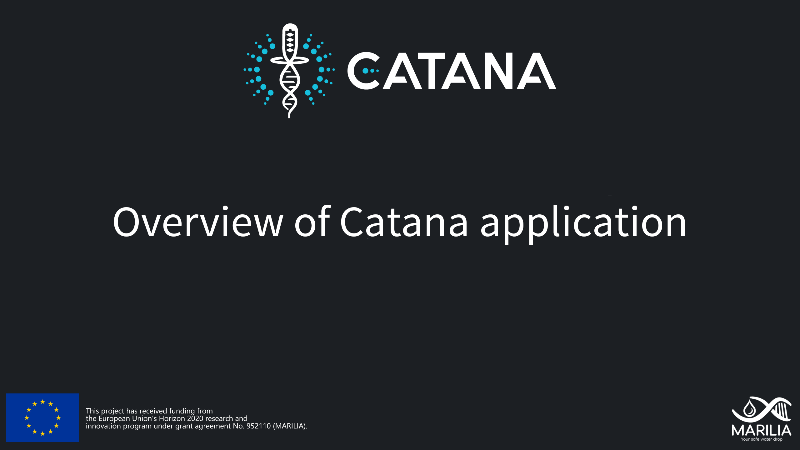Discover Catana, a web-based modelling environment suited for proteins and DNA nanostructures that was developed during #Marilia project for tasks raging from the design of recombinant protein up to modelling of a functionalized nanostructure.
User-friendly features were developed to create and modify recombinant fusion proteins, predict protein structures based on the amino acid sequence, and manipulate DNA origami structures.
Overview of Catana application
This tutorial video provides an overview of the Catana modelling environment, aimed at design of proteins and nucleic acid nanostructures. Video covers introduction to the user interface, loading of structures, their transformations in space, creation of DNA strands from scratch, conversion to coarse-grained model, atom generation, and so on.
Mutating a protein residue
This tutorial video shows how to mutate a residue of the selected protein structure. You will also see how to highlight the mutated residue to emphasize the change, and how to export the modified structure as a new PDB file.
Removing parts of PDB structure
This tutorial video shows how to remove atoms, residues or even whole chains from the loaded PDB file, and then export the modified structure as a new PDB.
Adding amino acids to a protein chain
This tutorial video shows how to modify loaded PDB file by adding new amino acids to a protein chain.
Importing Cadnano structures
This tutorial video shows how to load and visualize DNA origami nanostructure, stored as Cadnano JSON file, in Catana. You will also see some of the visual representations and color schemes offered by Catana, as well as a process of duplication of the nanostructure, followed by the joining of two strands into one.
Importing oxDNA structures
This tutorial video shows how to load and visualize oxDNA structures in Catana, using Unified Nanotechnology Format as an intermediary step. Various settings and properties of the visualizations are described, including a step-by-step procedure to generate screenshots.


